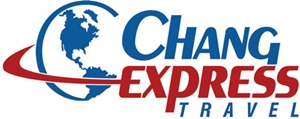Don’t Get Denied
at the Airport
Pack Your Bags with Confidence: The TSA Checklist for Safe Travel
The Transportation Security Administration (TSA) is responsible for the security of commercial air travel in the United States. To ensure passenger safety, the TSA has developed a checklist of permitted and prohibited items that passengers can bring on board an airplane. Knowing what items are allowed and not allowed can help you prepare for your trip and avoid delays at security checkpoints.
What Can I Bring on a Plane?
The following table outlines which items are TSA allowed and prohibited as carry-on and as checked baggage:
| Item | Carry-On | Checked Baggage |
| Liquids, gels, and aerosols in containers | 3.4 ounces (100 milliliters) or less per item | Allowed in larger containers, as long as they’re in checked baggage |
| Prescription and over-the-counter medications | Allowed, including insulin and inhalers | Allowed |
| Personal items, such as jewelry, watches, and eyeglasses | Allowed | Allowed |
| Electronic devices, such as laptops, tablets, and smartphones | Allowed | Allowed |
| Food and beverages purchased after passing through security | Allowed | Allowed |
| Guns, firearms, and ammunition | Not allowed | Not allowed |
| Explosive and flammable materials, such as dynamite and fuel | Not allowed | Not allowed |
| Knives, box cutters, and other sharp objects | Not allowed, except for plastic or round-bladed butter knives | Allowed in checked baggage |
| Baseball bats, golf clubs, and other sports equipment | Not allowed, except for some types of walking sticks and martial arts gear | Allowed |
| Tools, such as screwdrivers and pliers, that are 7 inches or less | Allowed | Allowed |
| Larger tools, such as wrenches and hammers | Not allowed | Allowed in checked baggage |
| Lighters and matches | Not allowed, except for one lighter or a book of matches in carry-on luggage | Allowed in checked baggage |
Liquids, Gels, and Aerosols
Liquids, gels, and aerosols in containers that are 3.4 ounces (100 milliliters) or less per item are allowed in carry-on bags. These items must be placed in a single, clear, quart-sized plastic bag. Passengers are allowed one bag per person.
There are some exceptions to this rule. Medications, baby formula, and food for special diets are allowed in reasonable quantities exceeding 3.4 ounces and are not required to be in a plastic bag. Additionally, liquids, gels, and aerosols that are purchased after passing through security checkpoints are allowed in carry-on bags.
Liquids, gels, and aerosols in larger containers are allowed in checked bags as long as they are placed in a leak-proof container and wrapped in protective material to prevent breakage.
Prescription and Over-the-Counter Medications
Prescription and over-the-counter medications are allowed in both carry-on and checked bags. These items should be clearly labeled and placed in their original containers. Passengers should inform the TSA officer at the security checkpoint if they have liquid medications, inhalers, or other medical devices that need special screening.
Personal Items
Personal items, such as jewelry, watches, and eyeglasses, are allowed in both carry-on and checked bags. Passengers are also allowed to bring personal care items, such as hairbrushes, makeup, and toothbrushes, in their carry-on bags.
Electronic Devices
Electronic devices, such as laptops, tablets, and smartphones, are allowed in both carry-on and checked bags. However, passengers should be prepared to remove these items from their bags and place them in a separate bin for X-ray screening at security checkpoints.
Food and Beverages
Passengers are allowed to bring food and beverages purchased after passing through security checkpoints on board the airplane. However, if the items are liquid, gel, or aerosol in nature, they must comply with the 3.4 ounces (100 milliliters) or less rule and be placed in a single, clear, quart-sized plastic bag.
TSA Prohibited Items List
The TSA has strict rules regarding which items are not allowed on airplanes at all. These items include:
- Guns, firearms, and ammunition
- Explosive and flammable materials, such as dynamite and fuel
- Knives, box cutters, and other sharp objects (except for plastic or round-bladed butter knives)
- Baseball bats, golf clubs, and other sports equipment (except for some types of walking sticks and martial arts gear)
- Lighters and matches (except for one lighter or a book of matches in carry-on luggage)
While some of these items may be allowed in checked baggage, passengers should be aware that others are prohibited entirely and could result in fines or legal action if found in their possession.
Tools
Tools that are 7 inches or less in length, such as screwdrivers and pliers, are allowed in both carry-on and checked baggage. However, larger tools, such as wrenches and hammers, are not allowed in carry-on bags and must be placed in checked baggages.
It is important to note that while some of these items may be allowed in checked baggage, others are strictly prohibited and could result in fines or legal action if found in a passenger’s possession.
By familiarizing yourself with the TSA guidelines and adhering to the permitted and prohibited item list, you can ensure a smooth travel experience. Before packing for your trip, it is highly recommended to visit the TSA’s official website for the most up-to-date information on permitted and prohibited items. Staying informed and prepared will help you avoid any unnecessary stress or complications during your journey.
In conclusion, the TSA checklist of permitted and prohibited items provides valuable guidance for travelers. Understanding what items are allowed and prohibited on airplanes can help you prepare and pack your bags with confidence. By following these guidelines, you can navigate security checkpoints smoothly, ensuring a safe and enjoyable travel experience. So, don’t let the fear of being denied at the airport hinder your plans—pack your bags with confidence and embark on your next adventure stress-free!
